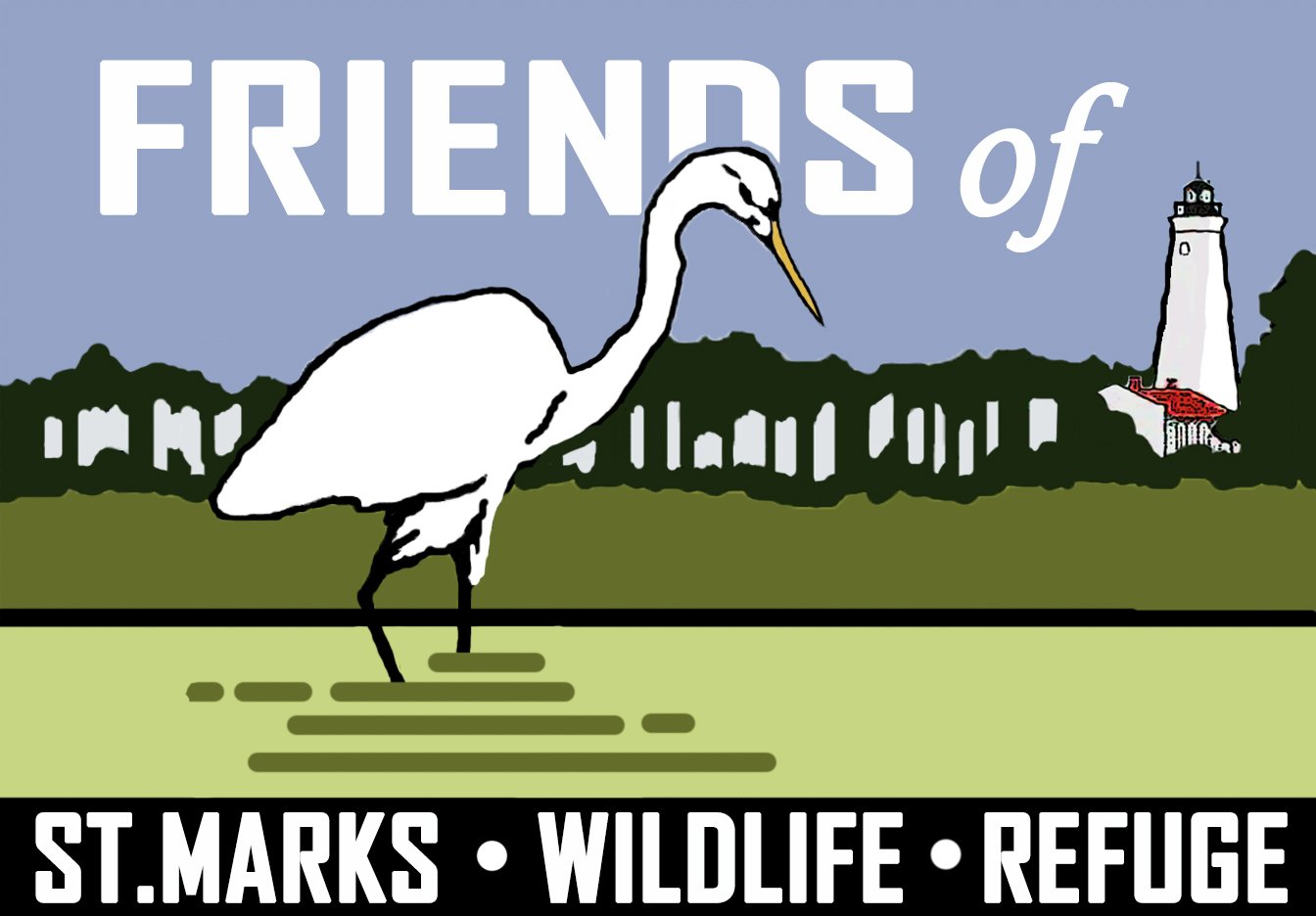August at St. Marks NWR serves to transition the refuge from the lethal heat of July into the sullen heat of September. August needs to be endured if we are ever to reach the faintly-remembered cool weather of Fall.
It was already in the low eighties as I walked out the Double Dikes under a mostly-full moon. I was trying to get to the end of the dike before sunrise. The Eastern sky was painted in swaths of pink and pale smoky blue. Pig Frogs were grunting randomly from the marshes along the dike and the large white blooms of pine hibiscus stood out in the predawn light.
I had scared off a Great Horned Owl as I pulled in to park and added a calling Least Bittern and two fly-by Wood Ducks to my list, while slapping at hordes of mosquitos and biting flies. I walked out on the North dike. It is higher and has better marsh views. It can be good for nightbirds like rails, owls, and nighthawks. My plan was to return on the South dike. It parallels the North dike and would bring me back to my car. Also, it’s lower and would provide a good vantage point for shorebirds on Stony Bayou.
I made it out just before sunrise and set my scope up to scan Stony Bayou. Yellow Warblers were moving through the brush along the edge of the dikes. Yellow Warblers are a common Fall migrant at the refuge. They start coming through in July and won’t finish passing through until early November. Out on the Stony Bayou mudflats there were scattered waders, Great Blue, Little Blue & Tricolored Herons along with Great and Snowy Egrets. A large group of Roseate Spoonbills were gathered around two white pelicans. The spoonbills and pelicans have been hanging out together for a few weeks. There was also a flamingo.
I walked back along the dike scoping for shorebirds. They were widely scattered. I found Black-bellied, Wilson’s and Semipalmated Plovers. Two of the black-bellies were in breeding plumage, indicating early migrants back from the arctic. There were Short-billed Dowitchers, Willets, both Greater & Lesser Yellowlegs, as well as, Least and Semipalmated Sandpipers. I found a single Stilt Sandpiper, another early migrant passing through from the Arctic on its way to South America for the winter.
If you brave the heat, you will see seasonal change occurring at St. Marks. Partridge Pea is in flower and the first ripening berries of Virginia Creeper are attracting Mockingbirds. Migratory Black Saddlebag dragonflies have shown up. Come early and you may even see a bobkitten following its mother. Life is in full progress at St. Marks, despite the heat.
August at St. Marks is hot and there are biting insects. However, there are also late-summer wildflowers and every day brings new migrant birds. Horsemint will start blooming this month and both Bald Eagles and Blue-winged Teal will return later in the month.
If you must endure August, you might as well come down to the refuge. Don’t worry, August never lasts more than a month.

